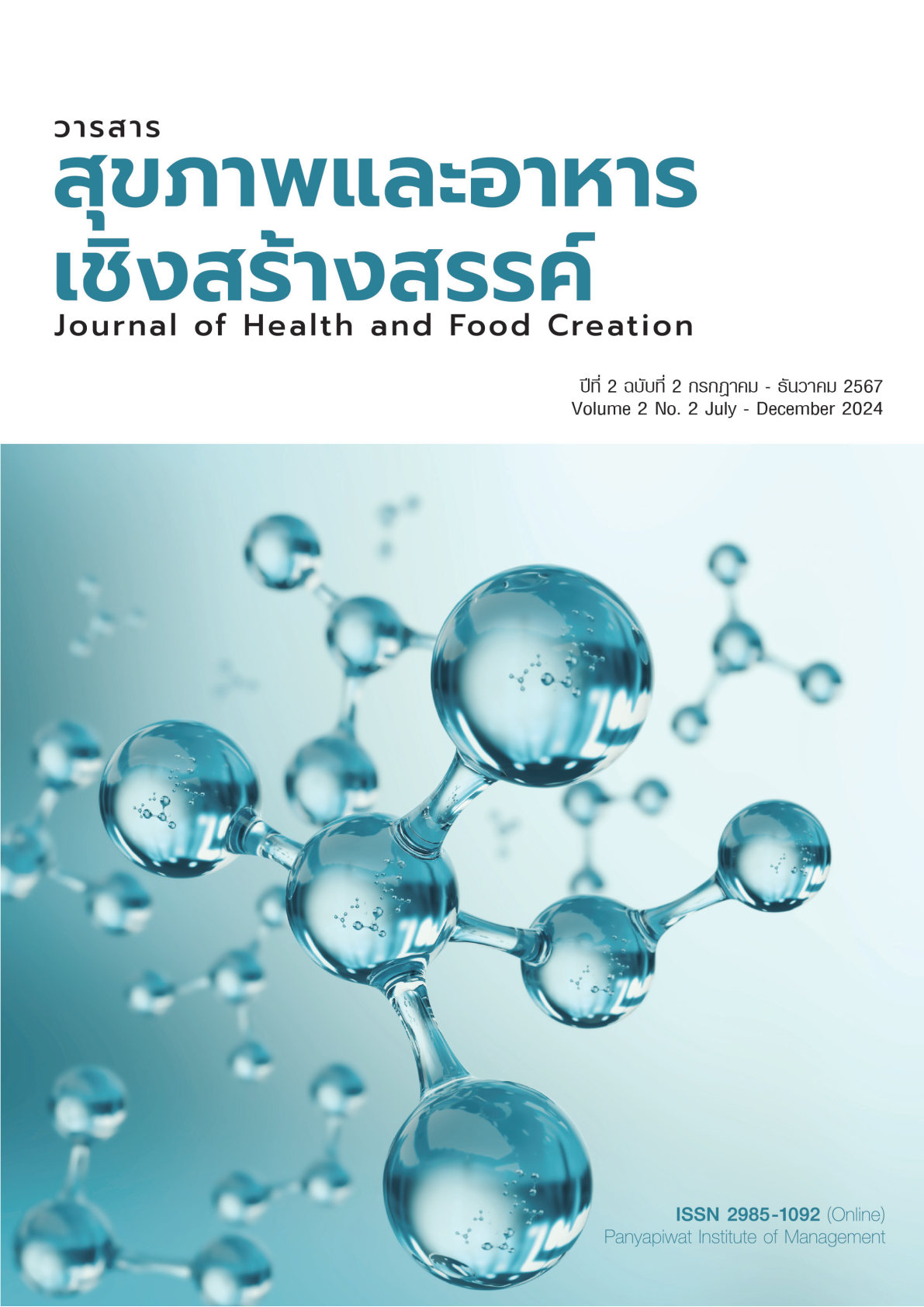A STUDY OF THE OPTIMAL SUBSTITUTION OF TAMARIND SEED STARCH FOR WHEAT FLOUR IN COOKIE PRODUCTION
Keywords:
Tamarind Seed Flour, Wheat Flour, CookiesAbstract
This study aimed to investigate the optimal replacement ratio of tamarind seed flour for wheat flour in cookie production to enhance the nutritional value of the final product and provide a new alternative for consumers. A total of three cookie formulations were developed, with the ratios of wheat flour to tamarind seed flour set at 50:50, 25:75, and 0:100, respectively. Chemical and microbial quality analyses of the tamarind seed flour revealed the compliance with Thai Industrial Standards (TIS) 638-2524. The analysis of 100 grams of tamarind seed flour showed no detectable total microbial count or growth, with an aw value of 0.43, moisture content of 6.36%, and ash content of 0.20%. Sensory quality assessment was conducted using a 9-point hedonic scale, with a testing group comprising bakery product manufacturers and consumers aged under 21. Results indicated that formulations 1 and 2 (wheat flour:tamarind seed flour ratios of 50:50 and 25:75) were favored in all sensory aspects, excepting for the overall acceptability and appearance. Considering the suitability scores, it was found that formulation 1 demonstrated the best overall satisfaction across all sensory attributes. Consequently, the 50% substitution of wheat flour with tamarind seed flour was determined as the most suitable formulation for cookie production, with unanimous consumer acceptance of the product. This study concludes that tamarind seed flour serves as a valuable alternative to wheat flour for health-conscious individuals.
References
Bangwaek, C. (2024, November 5). Research and develop products from tamarind seed flour. Department of Agriculture. https://www.doa.go.th/plan/wp-content/uploads/2021/05/54.1วิจัยและพัฒนาผลิตภัณฑ์จากแป้งเมล็ดมะขาม.pdf [in Thai]
Bunyasawat, J., & Bhoosem, C. (2017). Effect of substitution Durian rind powder with wheat flour on Tarts quality. RMUTP Research Journal, 11(2), 48-58. [in Thai]
Chammek, C., & Naivikul, O. (2006). Basic baking science and technology. Kasetsart University. [in Thai]
Engel, D., MacDonald, D., & Nash, C. (2007). Managing food safety (2nd ed.). Chadwick House Group.
Jones, A. B., & Brown, C. D. (2020). The impact of alternative flours on the quality of baked goods. Journal of Food Science, 85(2), 345-352.
Kim, S. H., & Park, J. W. (2017). Effects of rice flour substitution on the quality of cookies. Food Science and Biotechnology, 26(3), 657-663.
Lee, Y. J., Kim, M. Y., & Park, C. Y. (2015). Effects of rice flour substitution on the quality of cookies. Food Science and Biotechnology, 24(6), 1675-1682.
Liamkaew, R., & Chompreeda, P. (2018). Sensory acceptability tests of corn milk beverage mixed with cereals. APHEIT Journals, 7(1), 82-91. [in Thai]
Nicolas, L., Marquilly, C., & O’Mahony, M. (2010). The 9-point hedonic scale: are words and numbers compatible. Food Quality and Preference, 21(8), 1008-1015.
Pondet, S. (2024, November 2). Flour and starch. Department of Science Service. http://siweb1.dss.go.th/dss_doc/dss_doc/show_discription_doc.asp?ID=1782 [in Thai]
Smith, J. K. (2018). Nutritional benefits of tamarind seed flour. Journal of Food Composition and Analysis, 70, 123-129.
Thai Industrial Standards Institute Ministry of Industry. (2020). Standard for white rice flour (TIS 638-2563). Ministry of Industry. [in Thai]
Downloads
Published
How to Cite
Issue
Section
License
Copyright (c) 2024 Journal of Health and Food Creation

This work is licensed under a Creative Commons Attribution-NonCommercial-NoDerivatives 4.0 International License.
“ข้าพเจ้าและผู้เขียนร่วม (ถ้ามี) ขอรับรองว่า บทความที่เสนอมานี้ยังไม่เคยได้รับการตีพิมพ์และไม่ได้อยู่ระหว่างกระบวนการพิจารณาลงตีพิมพ์ในวารสารหรือแหล่งเผยแพร่อื่นใด ข้าพเจ้าและผู้เขียนร่วมยอมรับหลักเกณฑ์การพิจารณาต้นฉบับ ทั้งยินยอมให้กองบรรณาธิการมีสิทธิ์พิจารณาและตรวจแก้ต้นฉบับได้ตามที่เห็นสมควร พร้อมนี้ขอมอบลิขสิทธิ์บทความที่ได้รับการตีพิมพ์ให้แก่สถาบันการจัดการปัญญาภิวัฒน์หากมีการฟ้องร้องเรื่องการละเมิดลิขสิทธิ์เกี่ยวกับภาพ กราฟ ข้อความส่วนใดส่วนหนึ่งและ/หรือข้อคิดเห็นที่ปรากฏในบทความข้าพเจ้าและผู้เขียนร่วมยินยอมรับผิดชอบแต่เพียงฝ่ายเดียว”






